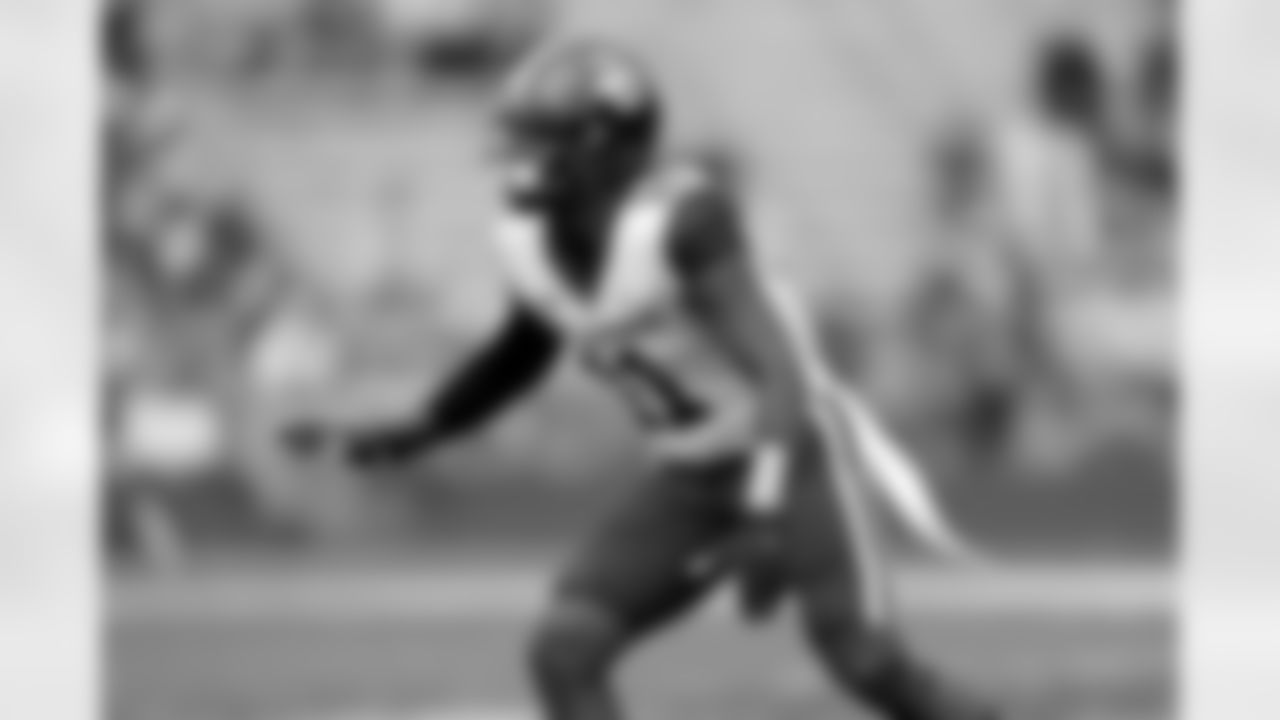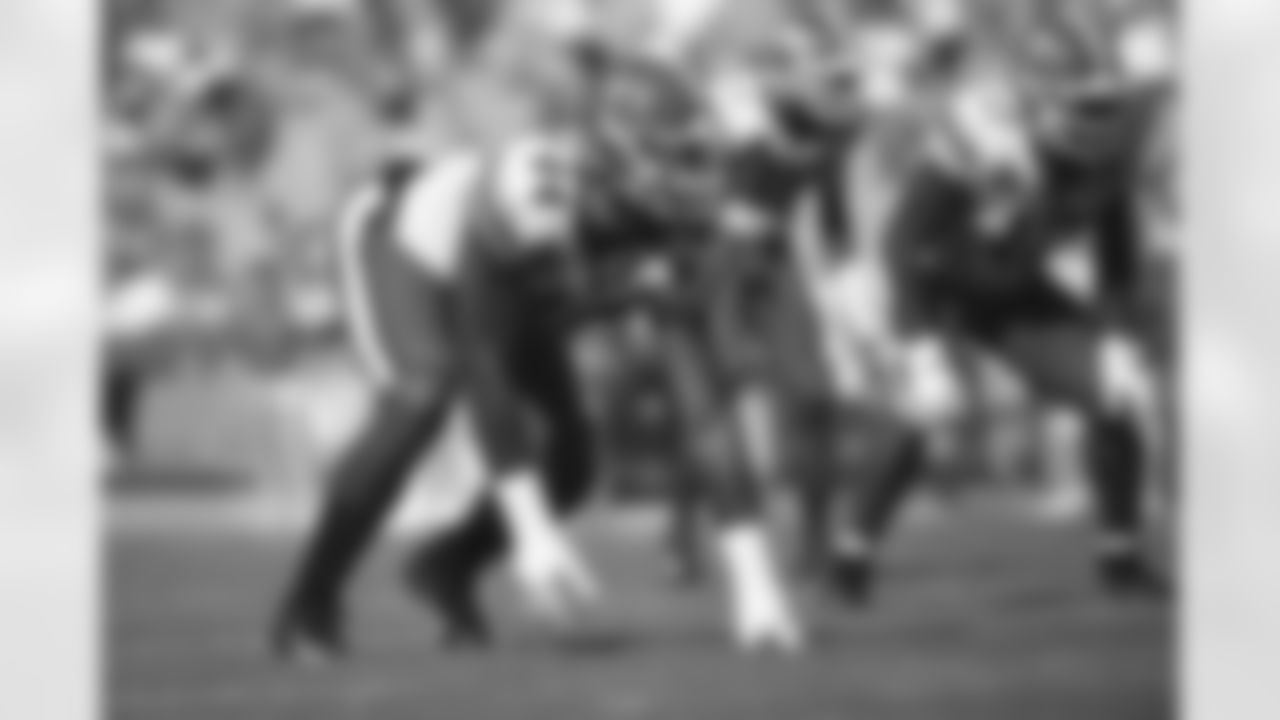Now that Super Bowl LVI has concluded, what did the 2021 season tell you about league trends and how the Giants get back on track?
John Schmeelk: There are exceptions, but it is very difficult for a team to win enough to bring home the Lombardi Trophy without having a quarterback capable of elite stretches of play. It isn't necessary to have a quarterback who has to be elite for all 17 regular games and a postseason, but he has to be able to do it for fairly long stretches within games and from week to week.
The salary cap makes team building in the NFL very difficult and having an elite quarterback can help hide and overcomes some deficiencies at other spots. Every team will have weak spots on the roster, whether due to injury or strategic decisions by the front office. A time will come, however, when even a great quarterback is unable to overcome a weakness – especially when that weakness is on the offensive line.
The Bengals had been able to survive a struggling offensive line throughout their playoff run by converting some very difficult down-and-distances and making explosive plays. Explosive pass plays make sustaining drives less essential and can hide some offensive line issues. But it is hard to sustain that type of play over a long period of time.
The Bengals' inability to sustain drives in the second half cost them a potential championship. They closed the game with five consecutive scoreless drives while combining four first downs. Burrow was sacked seven times, hit 11 times, and pressured on more than half of his dropbacks. He was nearly hurt when he was contorted like a pretzel in the second half. It doesn't mean that a team needs an elite offensive line to succeed, but it does mean the line has to be good enough for an offense to function. If a team can simply stay out of the lower quarter of the league in terms of pass protection that should be good enough. It should be the Giants' goal this season, along with figuring out if Daniel Jones can provide the stretches of elite play that can propel a team to a Super Bowl. If the Giants can check both boxes, they will be much further along in their building process than it appears today.
Lance Medow: The Bengals and Rams both took different paths to the Super Bowl, so don't go so far to say that there's one trend everyone has to follow; but there are similarities in terms of the structure - and it starts up front. Both teams have very good defensive lines that can stop the run and get after the quarterback. Los Angeles drafted Aaron Donald, signed A'Shawn Robinson in free agency and acquired Von Miller in a trade while Cincinnati drafted Sam Hubbard and added D.J. Reader and Trey Hendrickson in free agency. Each defensive line afforded its team flexibility in the secondary, especially in the Bengals' case. Where they differ is on the opposite side of the line. Joe Burrow was sacked 51 times during the regular season and 19 times over four postseason games, yet Cincinnati still managed to overcome issues in pass protection - thanks to the play and production of their quarteback. The same can be said as to why the Rams upgraded their quarterback situation before the season by trading Jared Goff for in the Matthew Stafford deal. Consistent, steady performance from your signal caller can go a long way.
The other element that's worth highlighting is the return both teams have received through the draft. Yes, the Rams made several splashes via trades and the Bengals added key players in free agency, but don't overlook the fact that the core of both franchises was built through the draft and those players quickly delivered. Burrow, Ja'Marr Chase, Tee Higgins, Logan Wilson, Jonah Williams, Germaine Pratt, Jessie Bates, Hubbard and Joe Mixon were key draft choices. Even kicker Evan McPherson, who didn't miss a postseason field goal, was discovered through the draft process. Los Angeles is no different as Donald, Rob Havenstein, Tyler Higbee, Cooper Kupp, Josh Noteboom, Brian Allen, Sebastian Joseph-Day, Taylor Rapp, Darell Henderson, David Long, Nick Scott, Cam Akers, Van Jefferson, Terrell Burgess and Jordan Fuller were brought in via the draft. This is the biggest lesson for the Giants: Free agency can only solve so much. Due to salary cap restrictions, you have to consistently draft well and, most important, develop those players.
Matt Citak: The 2021 season, including the playoffs, showcased several areas of a roster as crucial components for a successful team in today's NFL, and it starts at quarterback. Looking back at the last nine Super Bowl winners, seven of them were won by Tom Brady, Russell Wilson, Patrick Mahomes or Matthew Stafford. Having an elite quarterback capable of carrying a team when needed is vital in today's pass-heavy NFL.
On a similar note, having a talented quarterback helps elevate the play of the offensive weapons around him, which is another key part of building a strong team. The Rams made their postseason run due to contributions from Cooper Kupp (Super Bowl LVI MVP), Odell Beckham Jr. (52 yards and a TD in less than one half vs. Bengals), Tyler Higbee and Cam Akers. On the other sideline, the Bengals had Ja'Marr Chase, Tee Higgins, Tyler Boyd and Joe Mixon help carry them to the Super Bowl. Both of last year's Super Bowl participants, the Buccaneers and Chiefs, also had a group of dangerous offensive weapons. Having multiple playmakers capable of a big gain on any snap is a key reason why all four of these teams have found a ton of recent success.
The two other components of building a roster to win in today's NFL were put on full display in the Super Bowl - having a strong pass rush and (at the very least) a serviceable offensive line. The Bengals entered this matchup with the offensive line being their biggest weakness, which the Rams were prepared to exploit. Aaron Donald, Von Miller and Leonard Floyd led a Rams pass rush that sacked Joe Burrow seven times and totaled 11 quarterback hits. Although Cincinnati was able to overcome its deficiencies along the O-line to make it to the final game, the club ultimately fell short largely due to its pass protection. Being able to get after the quarterback, while also being able to protect your own, are necessary factors in building a championship-caliber roster.
NFL Media analyst Daniel Jeremiah released his final edition of the top 50 prospects in the 2022 NFL Draft.


No. 50 Logan Hall, DT, Houston

No. 49 David Ojabo, EDGE, Michigan

No. 48 Sam Howell, QB, North Carolina

No. 47 Kaiir Elam, CB, Florida

No. 46 Christian Watson, WR, North Dakota State

No. 45 Skyy Moore, WR, Western Michigan

No. 44 Nik Bonitto, EDGE, Oklahoma

No. 43 Bernhard Raimann, OT, Central Michigan

No. 42 Tyler Smith, OT, Tulsa

No. 41 Jalen Pitre, S, Baylor

No. 40 Matt Corral, QB, Mississippi

No. 39 Lewis Cine, S, Georgia

No. 38 Christian Harris, LB, Alabama

No. 37 Travis Jones, DT, Connecticut

No. 36 Kenyon Green, G, Texas A&M

No. 35 Kyler Gordon, CB, Washington

No. 34 Arnold Ebiketie, EDGE, Penn State

No. 33 Kenneth Walker III, RB, Michigan State

No. 32 Andrew Booth Jr., CB, Clemson

No. 31 Boye Mafe, EDGE, Minnesota

No. 30 Zion Johnson, IOL, Boston College

No. 29 Quay Walker, LB, Georgia

No. 28 Breece Hall, RB, Iowa State

No. 27 Tyler Linderbaum, IOL, Iowa

No. 26 Malik Willis, QB, Liberty

No. 25 Jahan Dotson, WR, Penn State

No. 24 Kenny Pickett, QB, Pittsburgh

No. 23 Devonte Wyatt, DT, Georgia

No. 22 Charles Cross, OT, Mississippi State

No. 21 Dax Hill, S, Michigan

No. 20 Trevor Penning, OT, Northern Iowa

No. 19 Treylon Burks, WR, Arkansas

No. 18 George Karlaftis, EDGE, Purdue

No. 17 Nakobe Dean, LB, Georgia

No. 16 Jameson Williams, WR, Alabama

No. 15 Chris Olave, WR, Ohio State

No. 14 Trent McDuffie, CB, Washington

No. 13 Devin Lloyd, LB, Utah

No. 12 Derek Stingley Jr., CB, LSU

No. 11 Jordan Davis, DT, Georgia

No. 10 Kayvon Thibodeaux, EDGE, Oregon

No. 9 Jermaine Johnson II, EDGE, Florida State

No. 8 Evan Neal, OT, Alabama

No. 7 Drake London, WR, Southern California

No. 6 Travon Walker, EDGE, Georgia

No. 5 Kyle Hamilton, S, Notre Dame

No. 4 Garrett Wilson, WR, Ohio State

No. 3 Ickey Ekwonu, OT, North Carolina State

No. 2 Ahmad "Sauce" Gardner, CB, Cincinnati

No. 1 Aidan Hutchinson, EDGE, Michigan



















